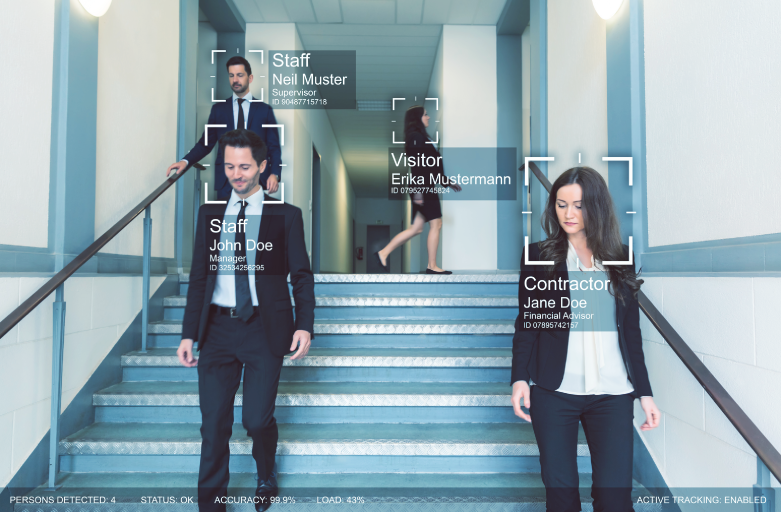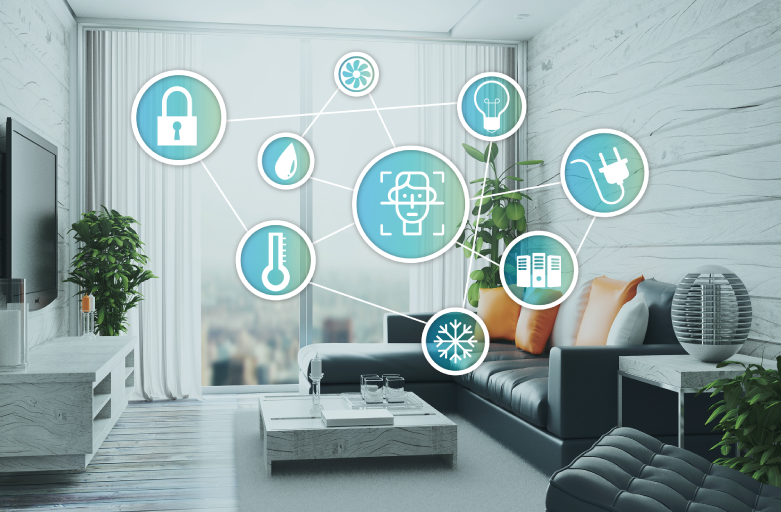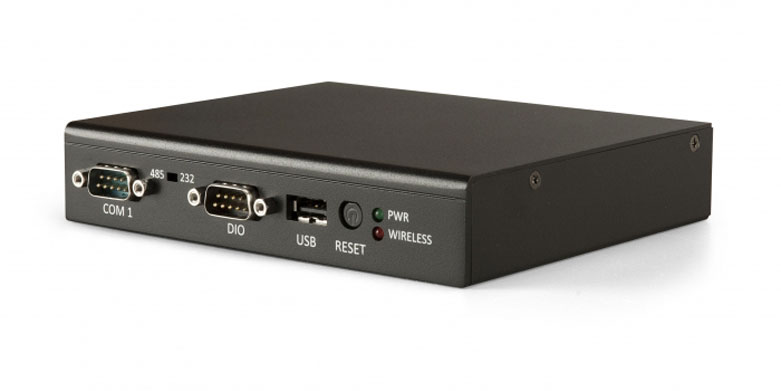Making buildings smarter and safer has never been easier thanks to a new wave of IoT and edge AI systems that bring sensors, cameras and control mechanisms together in a truly intelligent management ecosystem. This technology is not exclusive to the latest hyper-modern new builds; it’s equally applicable to any commercial, industrial or residential building because it can afford advantages such as lower energy consumption, predictive maintenance alerts, better security, increased occupant comfort and safety, and the more efficient utilization of building assets and services. All these drive lower costs and less system downtime (fewer complaints from building residents), and thus a high return on investment.
Access Control Security
Swapping RFID cards, time-stamps and the traditional keys for biometrics like facial recognition means better security for buildings. Physical keys and access cards can be loaned, lost or copied, creating a potential security hole. On the other hand, you can always forget your wallet or your keys at home, but not your face!
Should an employee or resident leave the premises, using biometrics simply means removing their data from the system, rather than making sure a physical access key is returned. This not only saves time but also reduces management costs.
Although cameras are already frequently used to monitor for theft or break-ins, traditional CCTV systems lack the intelligence required for detecting potential intruders and automatically alerting building security about them. With their real-time motion sensing, facial recognition, and object detection capabilities, the latest generation of smart cameras, combined with edge computing systems that carry out real-time data processing and analysis, is making the development and deployment of these intelligent preemptive security applications at scale possible for the first time.

Energy Control Hazard Monitoring
Smart lighting and climate control systems that can automatically adjust their settings by, for example, turning the lights and air conditioning off when they sense that a room is empty, deliver considerable energy and costs savings compared to conventional systems that are activated and shut down at set times.
Smart power and water usage monitoring coupled to trend intelligence built on long-term analytics insights generated using sensors, edge systems, and cloud services can alert building managers to abnormal usage spikes that could indicate an equipment problem or even a potential break-in that requires investigating.
Climate Control
The daily weather is ever-changing, and it directly affects the temperature, humidity, and comfort level inside a building. However, the cooling or heating service is often controlled by a single wall panel on each floor of the building and applies a fixed temperature setting regardless of what’s happening outside, how many people are inside it, and what time of year it is. This approach is not only inefficient but also ineffective because it also doesn’t take into account other potential issues such as localized drafts, windows, and exhaust heat from equipment.
Smaller meeting-rooms are often controlled by their own climate control systems. After a meeting finishes, these are often mistakenly left running, wasting power. By creating a centralized control system with a network of wireless temperature sensors, the internal systems can react more dynamically to the number of people on any floor or area of it, while also adjusting immediately to changes in the weather outside the building. The installation of dynamic climate control systems makes a building’s internal environment more comfortable while generating considerable savings by reducing energy wastage.

Deeper Building Intelligence
Without a centralized overview of internal building systems and people’s movements, it’s very difficult to understand how a building is used. Moving into a new abode can cause sudden bill shock, leaving an operations team bewildered and wondering where to save money.
Even without facial recognition, using cameras to accurately (and anonymously) people count is a great way to create a dynamic understanding of how a whole building, or even small sections or areas within it, is actually used. Studying the system’s analytics can deliver deep insights, allowing iterative tweaks to its controls with the aim of minimizing power consumption and optimizing environmental comfort. As an added benefit, seating can be rearranged to improve worker efficiency or accommodate company growth and choke-points at the start and end of shifts can be mitigated.
Long-term analytics insights can also highlight sudden anomalies in equipment that could be a prelude to malfunction. These predictive alerts can trigger maintenance, avoiding essential systems downtime, and in lieu of regular calls-outs to check systems, also reduce costs. Preventative monitoring is particularly important in places that suffer more extreme weather conditions and rely on cooling/heating systems to create a sustainable working or living environment.
How to Build a Smart Building
A combination of sensors connected to small, efficient and ruggedized edge devices that are connected to a reliable cloud-based infrastructure gives a best-of-both-worlds approach. Real-time data processing and analysis can be done at the edge by the device itself, enabling automatic alerts and minimizing the volume of data that needs to be transmitted to the cloud. This approach offers advantages such as overall lower power consumption and reduced network traffic because it removes the need for absolute connection reliability to the cloud service. By considerably reducing data-flow it also reduces network load, processing latency, and even bandwidth costs if data services are metered.

VIA Intelligent Building Solutions
VIA offers a growing family of intelligent building solutions that enable owners and managers to develop and implement a proactive approach to maximizing safety, security, energy consumption, and environmental comfort in their commercial, industrial, and residential complexes. For more information, please click here.
